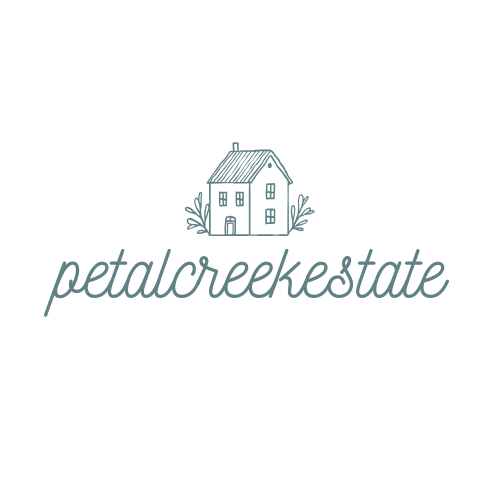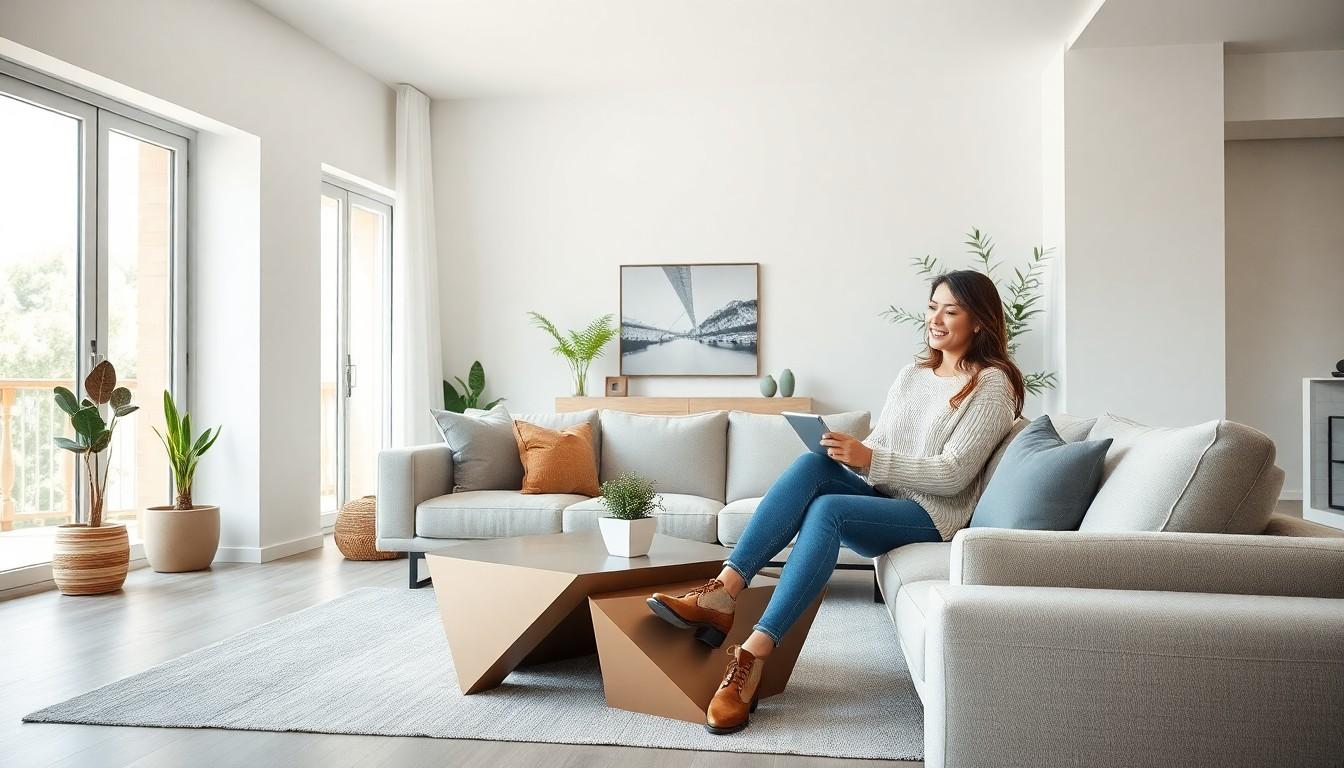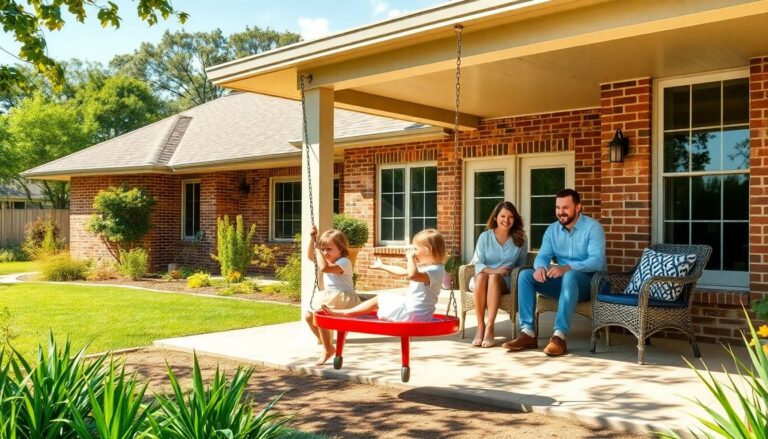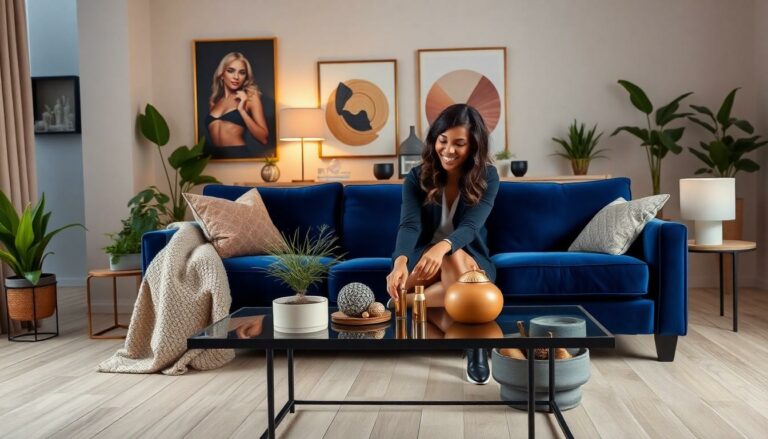In a world where minimalism reigns supreme and open spaces are the new black, modern home design interior is all about striking the perfect balance between style and comfort. Gone are the days of stuffy rooms filled with overstuffed furniture and floral patterns that could make anyone dizzy. Today’s interiors invite creativity and functionality to dance together like they’re at a fancy gala, ensuring every corner of the home reflects personality without sacrificing practicality.
Modern Home Design Interior
Modern home design interior encompasses functional aesthetics and simplicity. This design style prioritizes open spaces with an emphasis on natural light. Bold lines and geometric shapes characterize furnishings and layouts, promoting an uncluttered atmosphere. The use of sustainable materials reflects contemporary values and environmental consciousness.
Color palettes often focus on neutral shades, complemented by occasional bold accents. Furniture selections favor minimalist designs that serve multiple purposes. These pieces create a seamless harmony between form and function. Artisanal decor elements add unique character while maintaining an overall cohesive look.
Additionally, technology integration plays a crucial role in modern interiors. Smart home systems enhance convenience, offering intuitive control over lighting, temperature, and security. This advancement aligns with the trend of creating a comfortable living space that meets today’s lifestyle demands.
Indoor plants frequently feature in modern home interiors, bringing a touch of nature indoors. Greenery contributes to improved air quality and creates a relaxing ambiance. Choosing pieces that resonate with personal style fosters an environment of authenticity in every room.
Modern home design interior focuses on striking a balance between beauty and practicality. By merging creativity with functionality, this design philosophy allows for unique expressions of individual taste, shaping the future of living spaces.
Key Elements of Modern Home Design
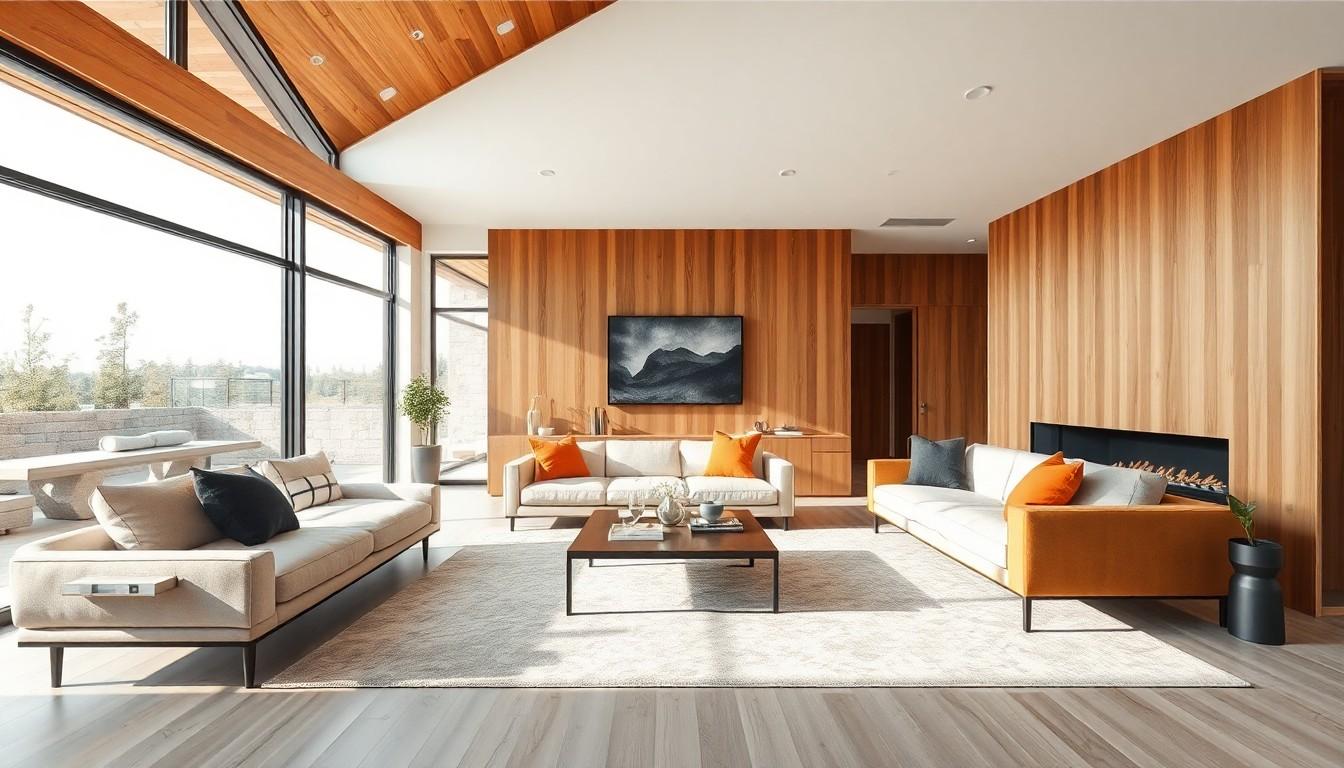
Modern home design revolves around simplicity, functionality, and aesthetic appeal. The focus remains on creating spaces that are both comfortable and visually striking.
Color Palettes
Color palettes often incorporate neutral shades like whites, grays, and beiges. These base colors create a serene foundation while allowing vibrant accents to stand out. Accents in bold hues such as navy blue or emerald green provide personality and visual interest. Designers often select colors based on their ability to reflect light, enhancing the sense of openness in a space. Each color choice contributes to an overall feel of tranquility.
Materials and Textures
Materials play a vital role in modern interiors, with an emphasis on sustainability and durability. Common selections include wood, metal, glass, and stone. Natural materials are favored for their organic qualities and visual warmth. Textures blend smooth surfaces with soft fabrics, creating an inviting atmosphere. A combination of matte and glossy finishes adds depth and complexity to spaces. Every element contributes to a harmonious and balanced design.
Furniture Style
Furniture style in modern home design prioritizes minimalism and versatility. Clean lines and geometric shapes define contemporary pieces, promoting an uncluttered look. Multi-functional furniture, such as sofas with storage or extendable dining tables, maximize utility without sacrificing style. Designers often choose low-profile items to create a sense of airiness. Every selection reflects careful consideration of form and function, enhancing overall comfort and accessibility.
Popular Trends in Modern Home Design Interior
Modern home design interior embraces various trends that enhance both functionality and aesthetics. Open floor plans, minimalist aesthetics, and technology integration stand out as significant movements shaping today’s living spaces.
Open Floor Plans
Open floor plans create a seamless flow between rooms, promoting interaction and space utilization. Designers favor this layout to maximize natural light and foster interconnectedness. Living areas often merge with kitchens and dining spaces, offering versatility. Families benefit from the ability to engage while cooking or relaxing. Privacy becomes secondary to communal living, encouraging socialization. Such configurations allow for creative decor choices, maintaining a cohesive design throughout the home.
Minimalist Aesthetics
Minimalist aesthetics focus on simplicity and functionality, emphasizing “less is more.” This approach removes unnecessary clutter, showcasing essential items and creating a serene environment. Neutral color schemes—like whites, grays, and beiges—dominate, providing a calming backdrop. A few bold accents add character without overwhelming the senses. Furnishings align with this philosophy, boasting clean lines and multi-functional designs. Overall, minimalism champions open spaces and invites personal expression within a tranquil setting.
Incorporating Technology
Technological integration enhances modern home design, bringing convenience and efficiency. Smart home systems play a pivotal role, allowing homeowners to control lighting, security, and climate with ease. Energy efficiency often drives these innovations, reducing utility costs while supporting sustainability. Homeowners frequently incorporate voice-activated assistants to streamline daily tasks. Furthermore, technology promotes comfort, enabling personalized environments tailored to individual preferences. As technology evolves, it continues to shape livable spaces, blending seamlessly with contemporary design principles.
Tips for Achieving Modern Home Design Interior
Modern home design emphasizes functionality and aesthetics. Attention to detail shapes inviting spaces that reflect personal style.
Space Planning
Effective space planning lays the foundation for modern interiors. Open layouts encourage movement and interaction, allowing family members to engage easily. Minimal boundaries enhance natural light, creating an airy atmosphere. Multi-functional furniture, such as sofas with storage or extendable dining tables, maximizes utility and reduces clutter. Zoning areas for different activities maintains organization while fulfilling practical needs. Consider flow and accessibility to ensure that spaces serve their purpose without feeling cramped.
Lighting Design
Optimal lighting design transforms interiors into vibrant spaces. Layered lighting creates depth and enhances visual interest. Incorporate ambient lighting, such as ceiling fixtures, to provide general illumination. Task lighting offers focused light where needed, like pendant lights above dining areas or desk lamps in workspaces. Accent lighting highlights artwork and architectural features, adding character to the room. Utilize large windows and reflective surfaces to harness natural light and minimize reliance on artificial sources. Balancing these elements cultivates a warm and welcoming environment.
Simplicity and Functionality
Modern home design embraces a harmonious blend of simplicity and functionality. By prioritizing open spaces and natural light, it creates inviting environments that foster connection and comfort. The focus on sustainable materials and minimalist aesthetics reflects a commitment to both style and practicality.
As technology continues to evolve, its integration into home design enhances convenience while maintaining aesthetic appeal. Homeowners can express their individuality through thoughtful choices in color palettes and furniture that serve multiple purposes.
Ultimately, modern interior design transforms living spaces into serene sanctuaries that balance beauty and utility, making every home a unique reflection of its inhabitants.
